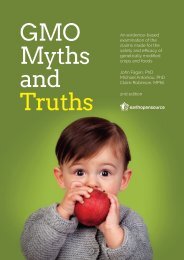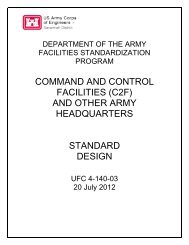1923%20Memoir%20on%20Maps%20of%20Chinese%20Turkistan%20by%20Stein%20s
1923%20Memoir%20on%20Maps%20of%20Chinese%20Turkistan%20by%20Stein%20s
1923%20Memoir%20on%20Maps%20of%20Chinese%20Turkistan%20by%20Stein%20s
You also want an ePaper? Increase the reach of your titles
YUMPU automatically turns print PDFs into web optimized ePapers that Google loves.
HISTO11.I' 01: SI'R\'I~:TS [Chap. 1<br />
Before, Ilowever, setting out for t,llis it. was im~erative to give ol~r Irard-tried camels<br />
a brief rest with water ant1 grazing at the salt springs of Altmish-bulak.<br />
Nove tOX't~ish-bll'nk Lcl Siugll llad jast safely arrived :rt the Loo-Ian site after his survey<br />
rnlt spr~ng*.<br />
of tl~e Burnk-daryti, ant1 wit11 Ililn I proceeded by a new route to<br />
tllose at the foot of the Kurak-tftgll northward, while Iabonrers and antiqnes were<br />
Eelltbrck toour depot at hfirin. 2' After reple~lishing onr ice-supl)ly and takillg an indispensable<br />
store of fuel we left. Altmish-bulak on February 25 for our respective tasks. LB1 Sing11<br />
was to survey t,l~e extreme nortll-eastern extensio~~ of the great. salt-encrusted basin once<br />
filled bp the Lop sea and southernnlost llill ranges of the Kuruk-trig11 overloolting them.<br />
I lllyself wished to trace tile ancient, Chinese route fron~ the eastern edge of the once habitable<br />
Lou-Ian area right through to the point, n here it w;is likely to lrave diverged from the<br />
line still followed by tile desert, track fro111 T~u1-1l11ang along the ~outi~ern shore of file<br />
dried-op sea.<br />
It was a task of special geogral~llical and I~istoriral interest but beset also by serious<br />
ph!.sical ditticulties and risks ; for on tlre grotuld to be crossed no rater<br />
for<br />
Chinese route from conld be expected-over lllost of it not even fuel-before striking tlre<br />
to T'l"~hl'nng. Tun-l~oan,rr - caravan track near the eastern extremity of the ancient sea<br />
bed, a matter of some ten days of hard marching. Apart from the serious risk of physical<br />
obstacles wl1ic11 \roulcI cause delay and exhaust our liarcl-tried camels, tliere was the problem of<br />
striking the line of the ancient route and of tracking it thro~lgh a \vilclerness devoid of all<br />
resources since the damn of l~istorical times. I Ira~e related else\vhere how hints derived from<br />
topograpl~ical and archrt?ological observations, combined wit11 fortunate finds of relics left<br />
behind by the aucieut traftic of centuries, helped to guide me and to solve the problem, 2i Here<br />
the briefest explanation of the route, as now she\\ a on the map, mill suffice.<br />
After regaining across difficult wind-eroded ground the vicinity of the terminal poist<br />
(Z'appni abo~e mentioned at Camp c, we moved for two long marches to<br />
Crossing of salt-encrusted<br />
the north-east until we strucl; the belt of salt-encrusted erosion terraces<br />
Lop sea bed,<br />
which the early Chinese accorunts of this dreaded 'northenl road' knew<br />
as the 'White Dragon Afouncls'. 20 Then on a very trying march we crossed to the south-east<br />
the dried-up sea-bottom with its crumpled-up crust of hard salt, fortonatelp at the very point<br />
where it was narrowest. Thence continuing over easier grouud to the south along the ancient<br />
sea shore, we reached three days later its extreme eastern extension in the shape of a great bay<br />
overlooked from tlie north by a Ion. offshoot of the southern~~~ost, Knruk-tBg11.<br />
For two more days we skirted this bay eastwards under the steep cliffs of its sl~oreliue,<br />
and then crossed its salt-encrusted expanse, here still sholving patches<br />
Tun-hnang caravan of actual salt bog. After a long day's march on AIarch 6 we finally<br />
track gainod.<br />
reached the wells of Kum-kudak, on the Tun-huang caravan track. 27<br />
Here I found Lil Sing11 just arrived after having duly sur~eyed tlie wide northernmost<br />
bight of the dried-up sea and of the straggling low ranges fultlrer to the east. In conjunction<br />
with the work pluckily done a year later by Afriz-gul along the western shore our<br />
'circumnavigation ' of the ancient Lop sea was thus snccessfully achieved.<br />
After the timely arrival of our heavy baggage from Afirio a day later, we were able<br />
to turn once more northwards across tlre eastern baj- and in separate<br />
Dy:t ~ ~ l ~ ~ parties ~ ; ~ to Osurvey f in detail the ground close to the foot of the Kuruktag11<br />
where the early Chinese route to Lou-Ian had passed. At BEshtoghrak,<br />
near the eastern end of the great desert valley leading down towards the Lop sea<br />
basin, I picked up Surveyor M~thammad Yakfib who had meanwhile carried with praiseworthy<br />
perseverence a line of levels, carefully observed with a Zeiss instrument,, all the way<br />
up from the bottom of the bay north of Kum-koduk to tlle curious Mesa-filled basin east of<br />
2' See Sheet No. 29. D. 3. salt.contecl ' Tirdnngs', os distinct from Mesas, wna<br />
96 Cf. Q. J., xlviii. pp. 126 6qq.; Qeogi.aphica1 first reached is marked by the entry referring to an<br />
Review, is. pp. 26 sqq. important find of relics of ancient trnffic, circ. 6 milee<br />
28 see Sheet No. 32, A, B. 3, for the route from E. of C. ci.<br />
Camp xcix to Cnmp cii. The point where the belt of 27 See Sheet No. 32. B. 3, C. 3,4, D. 4.






